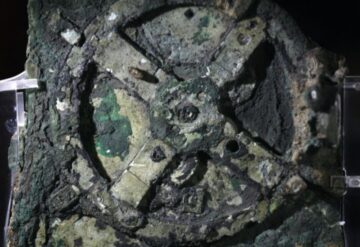Jennifer Ouellette in Ars Technica:
 The inspiration for the titular device in last year’s blockbuster, Indiana Jones and the Dial of Destiny, was an actual archaeological artifact: the Antikythera mechanism, a 2,200-year-old bronze mechanical computer. It doesn’t have any mystical time-traveling powers, but the device has been the subject of fierce scientific scrutiny for many decades and is believed to have been used to predict eclipses and calculate the positions of the planets.
The inspiration for the titular device in last year’s blockbuster, Indiana Jones and the Dial of Destiny, was an actual archaeological artifact: the Antikythera mechanism, a 2,200-year-old bronze mechanical computer. It doesn’t have any mystical time-traveling powers, but the device has been the subject of fierce scientific scrutiny for many decades and is believed to have been used to predict eclipses and calculate the positions of the planets.
A new paper published in The Horological Journal found evidence, based on statistical techniques drawn from physics, particularly the study of gravitational waves, that the mechanism’s calendar ring was designed to track the lunar calendar. This contradicts a century-long assumption among scholars of the mechanism that the calendar ring had 365 holes, thus tracking with a solar calendar, but is in keeping with the conclusions of a 2020 analysis.
“It’s a neat symmetry that we’ve adapted techniques we use to study the universe today to understand more about a mechanism that helped people keep track of the heavens nearly two millennia ago,” said co-author Graham Woan, an astrophysicist at the University of Glasgow.
More here.
Enjoying the content on 3QD? Help keep us going by donating now.
